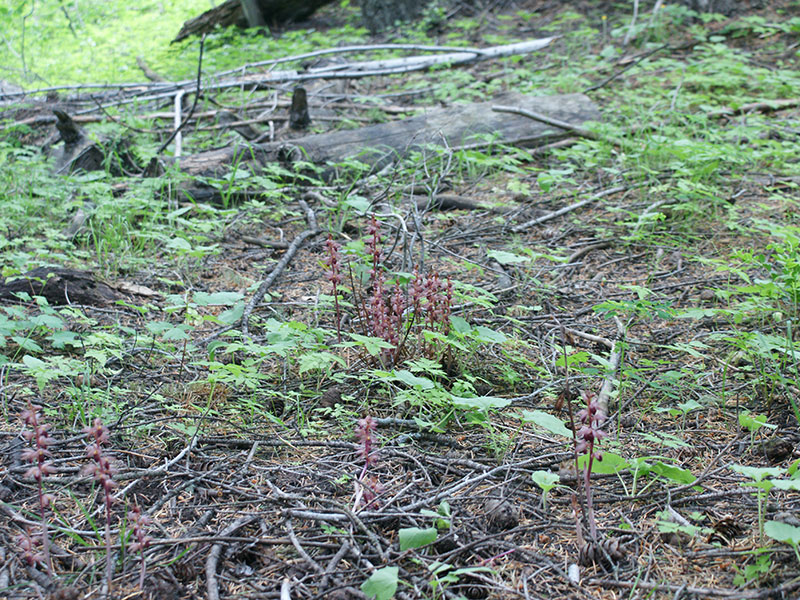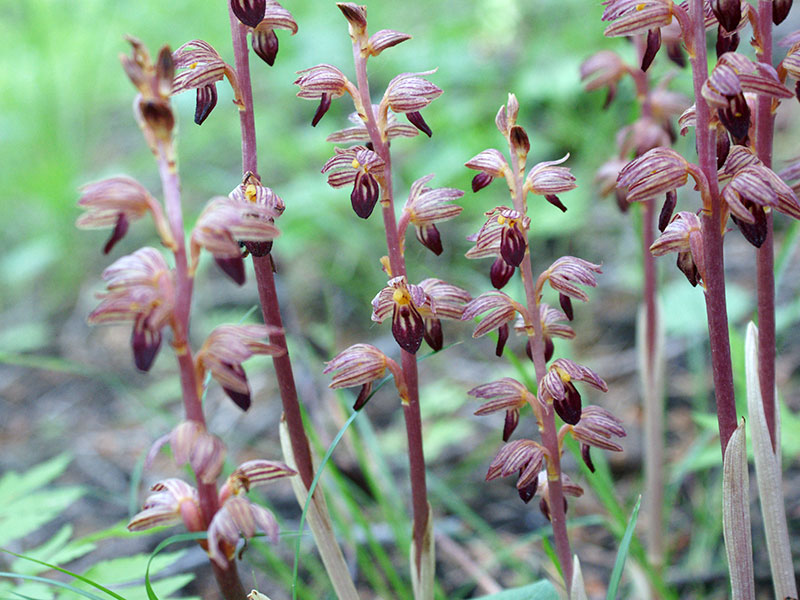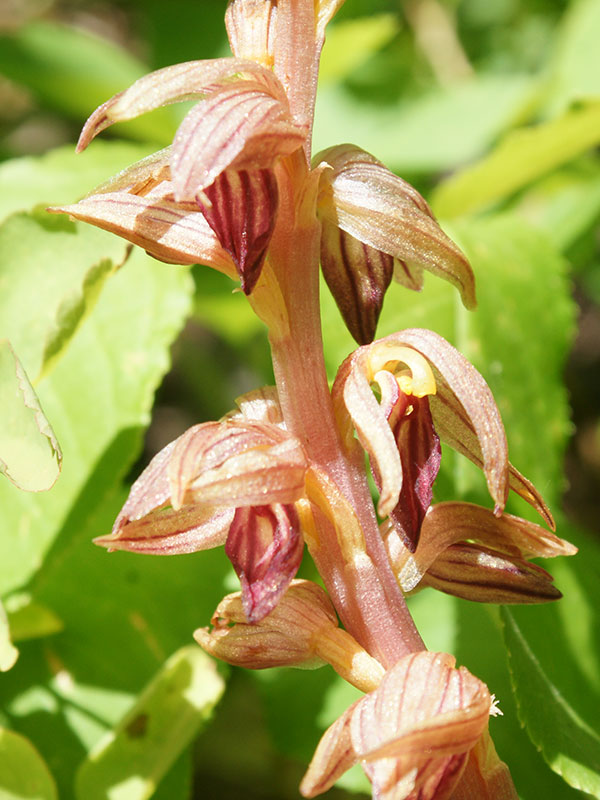Corallorhiza striata / striped coralroot
- short and purple – no green bits
- forest understory
- up to 35 flowers per stalk; often many stalks together
- flowers have 5 pointy, purple striped “petals” and one darker lower lip petal
Also known as: hooded coralroot
Synonym: Neottia striata
See also: Corallorhiza maculata / spotted coralroot
Striped coralroot orchid is easily suspected by the fact that it is not green, even if you will need to look further to actually identify it. It is not green because it lacks chlorophyll, depending instead on a fungus for its nutrients and carbon. The fungus, in turn, depends on a tree for its carbon. Thus, the orchid is myco-heterotrophic. Because of these symbioses, striped coralroot is found in dry, decaying litter under pines or mixed conifers. The Forest Service has a good page on just what myco-heterotrophs (or mycotrophs) are, and they are a fascinating lot. The spotted coralroot, also on this site, is similar in its biology.
Striped coralroot flowers in spring and summer. The inflorescence is a lax or dense raceme of pink to red to purple flowers with darker veins – the stripes. (The photos in the gallery give a really good illustration of what a raceme is.) Each flower is an open collection of 3 sepals and 2 petals (they look the same). They are all oval, narrowing to pointed tips. Because the sepals aren’t joined, the spur that some orchids have is missing in striped coralroot. The third petal forms the lower lip (labellum); it is a bit broader, unlobed, and with stripes that merge into a rather solid reddish purple. Look closely and you will be able to see the yellow central column, formed by the fusion of the male and female parts.
Sometimes you will see an inflorescence that is “gone by”. The fruit is a capsule up to an inch long. I have yet to find one that actually has seeds, perhaps because the pollinator is missing. Should you be lucky enough to catch one in the act, however, the parasitic wasp, Pimpla pedalis, is a pollinator of this orchid.
Although seeds may be produced, much of the reproduction is clonal so many shoots may be in one place. Interestingly, although this orchid lacks roots, depending instead on the fungus for those purposes, it does have a rhizome (an underground stem) and is clonal. This apparently, looks like ocean coral, hence the name, but don’t dig it up to find out.
Striped coralroot grows in forests and woodlands, and often forms large patches. Despite the fact that it is easily overlooked, it is really not uncommon and is found throughout much of North America, including about half of the US.
Interesting bits – first of all, to get things straight, the individual flowering stems of the orchid are called scapes. And despite not having chlorophyll, it does have leaves. These, however, are reduced to sheaths or scales surrounding the scapes. They are lighter in color than the rest of the plant and can be seen in several photos in the gallery.
The reddish color in the plants is due to a type of pigment, anthocyanin. Indeed, many plants have anthocyanins (it is an antioxidant) but you don’t see them because they are masked by the chlorophyll, except in the fall sometimes. If the anthocyanin is absent, as it sometimes is, the leaves, scapes and flowers are creamy yellow.
Acknowledgement – Gwynne Owen posted a set of photos on the Wildflowers of the Teton Valley Facebook page in June 2020 with beautiful photos of both coralroots in Teton Canyon. Until then, I would see a coralroot and just assume it was the spotted one. Thanks to Gwynne for alerting me to this species… now I see it a lot!
| Color | |
|---|---|
| Family | |
| Blossom size | |
| Inflorescence size | |
| Inflorescence type | |
| When? | |
| Where? |




